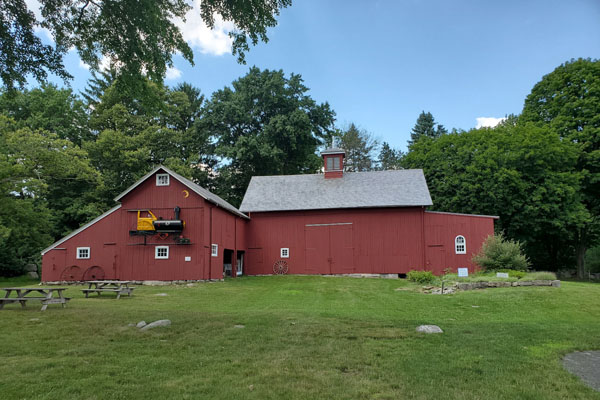Weston at Work Exhibit: Opening September 2025

Coley Barn
The Coley Barn is currently closed to the public. It is undergoing restoration and reinterpretation. Its new exhibition, "Weston at Work",is slated to open in September 2025.
Special thanks to CT Humanities for assisting with the funding of Weston at Work.
Weston at Work will explore the theme of industry in the form of manufacturing, agriculture and domestic textile production and the people who played roles in these three sectors from the 18th through the early 20th century in Weston. The exhibition will aim to highlight underrepresented groups (enslaved, free black, immigrant populations, women, and children) and their changing involvement in these industries and activities over the course of a century and a half.
Weston at Work will allow for meaningful engagement at all levels. A variety of interactive, hands-on components will keep all family members busy and engaged in the themes presented, providing differentiation at all levels.
This new exhibition will feature objects from the Weston History & Culture Center's extensive tool and farm implement collection. As well as the Wakeman Loom, Lockwood Baler, tools manufactured locally by the Bradley Ax Tool Company and more. "Weston at Work" will also feature historic photographs, inquiry and interactive components which will allow visitors of all ages to actively engage while they learn about Weston's past.
Coley Barn History
Built by David Dimon Coley in early 1883 to replace a similar barn consumed by fire in December of 1882. The rebuilt barn, like the original, was actually a large storage barn for hay and grain with an attached horse stable and livestock shed. The horse stable, which stood on the site of the present herb garden, was destroyed or torn down in the early 1950s.
Architectural History of the Coley Barn
The Barn reflects an "English" style once common along the New England coast. It features a simple gable roof with the ridge line running at right angles to the prevailing winds, an oversized cupola, and huge doors on the opposing long sides. Each of these features served a number of very practical purposes.
The doors, when opened, enabled the farmer to take advantage of wind power to help thresh grain, the area between the doors was the "threshing floor." The large doors also allowed the farmer to pull their hay wagons into the barn for unloading.
The over-sized cupola ventilated the immense heat generated by the stored hay that was curing in the lofts, a good ventilator would repel lightning. The trend toward ventilation began in the Connecticut Valley when each farmer chose to express himself architecturally by designing an individual style of cupola. It also allowed birds into the barn to help control the rodents and insect population. And it provided a high mount for one of the farmer's most important tools, the weathervane.
With English-style barns becoming increasingly rare, the Coley Homestead barn represents an historical asset of major importance.
